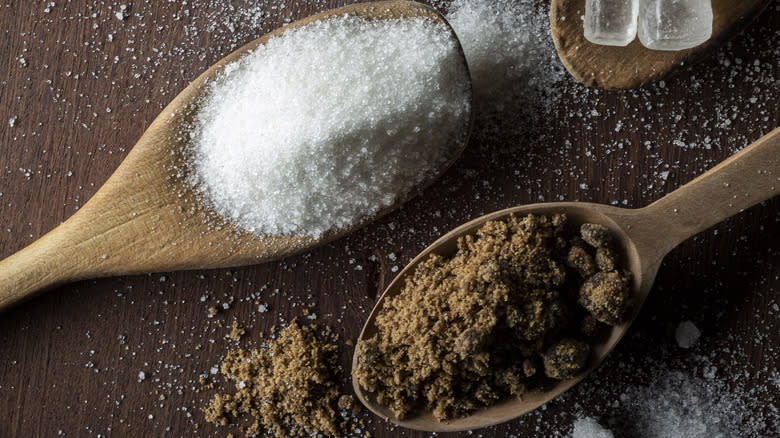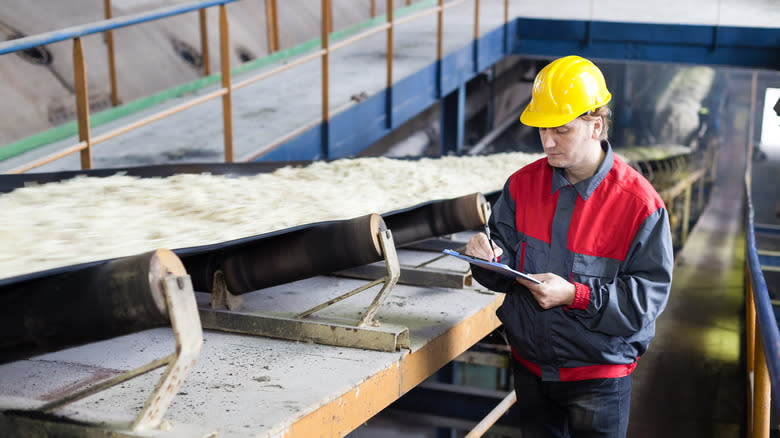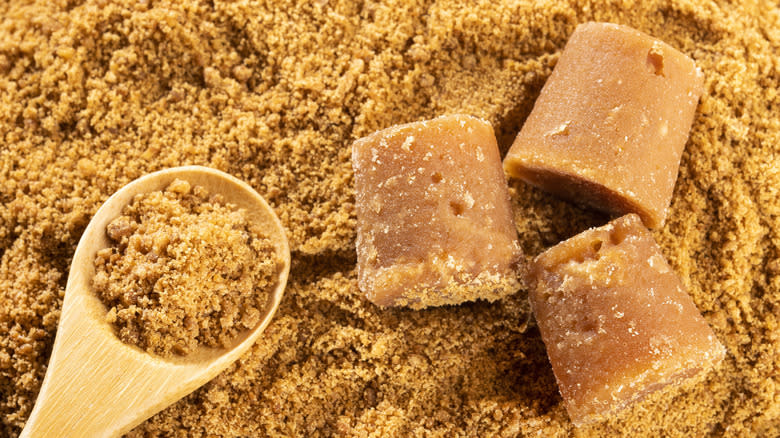What's The Difference Between Regular Sugar And Sucanat?

Buying a bag of sugar from the supermarket can seem a little daunting. Not only are there rows of different brands to choose from, but there are also multiple varieties of sugar. There's white sugar, both light and dark brown sugar, cane sugar, and so many more. One such type of sugar that you may stumble across is something called Sucanat.
Sucanat is a trademarked name that comes from the French phrase "sucre de canne naturel," meaning "sugar cane natural." This product, as you might guess from that name, is made from unrefined whole cane sugar. If you're familiar with Latin American cooking, you might already be familiar with panela (also called piloncillo), which is essentially the same thing.
Although both Sucanat and regular sugar are made from sugar cane, there are quite a few differences between them, starting with their taste and texture. Plus, the way they're processed also plays a hand in what sets these two apart.
Read more: Cake Hacks Every Baker Will Wish They Knew Sooner
How Sucanat And Regular Sugar Are Made

To manufacture Sucanat, the juice from the sugar cane plant first has to be removed. Then, the juice is brought to a boil, which creates a syrupy liquid. The syrup is dark in color, thanks to the molasses found in the sugar cane juice. From here, manufacturers use large paddles to beat the liquid, and slowly cool it down. What's left behind are granules of sugar. From there, the Sucanat is ready to be packaged and sold without undergoing any more processing, leaving dark brown granules that vary in shape and size. Because of this, it's considered an unrefined sugar.
To make regular sugar, however, the process looks a little different. Just like with Sucanat, the starting product here is sugar cane juice. However, what's different is that manufacturers typically use a chemical process to remove impurities from the juice before the boiling phase. Instead of using paddles to cool the syrup down, regular sugar's crystals are extracted through special machines that do so using centrifugal force. Finally, those crystals are processed once again in a refinery, and colorants are removed from the sugar to give it its pristine, white look. This type of sugar undergoes a whole lot more processing than Sucanat and its granules are uniform in size.
More Ways That Sucanat Stands Out From Regular Sugar

Besides how these sugars are processed and what they look like afterward, there are a few other ways that they differ -- for one example, they don't taste the same. When Sucanat is processed, manufacturers don't remove its molasses, which lets it keep its rich, caramel-like notes. It's also sweeter than white sugar and has a stronger flavor. On the other hand, white sugar has the molasses removed during the refinement process, leading to a cleaner, more mild taste.
Another difference between Sucanat and white sugar is that because it's unrefined, Sucanat can contain traces of other nutrients, such as iron and calcium. However, otherwise, it's nutritionally the same as your standard sugar.
When it comes to how sugar and Sucanat are used, they can actually be substituted in a 1 to 1 ratio, but because of the differences in flavor between the two products, you can get a very different-tasting dish if you swap one for the other. Still, now that you know a bit more about how these two sugars are similar and different, it's up to you to have fun experimenting with them in the kitchen.
Read the original article on Daily Meal.

